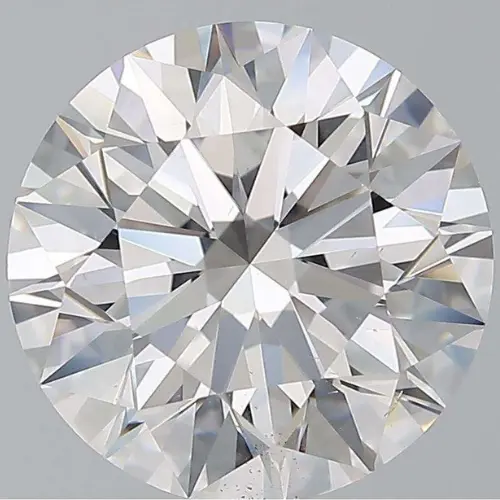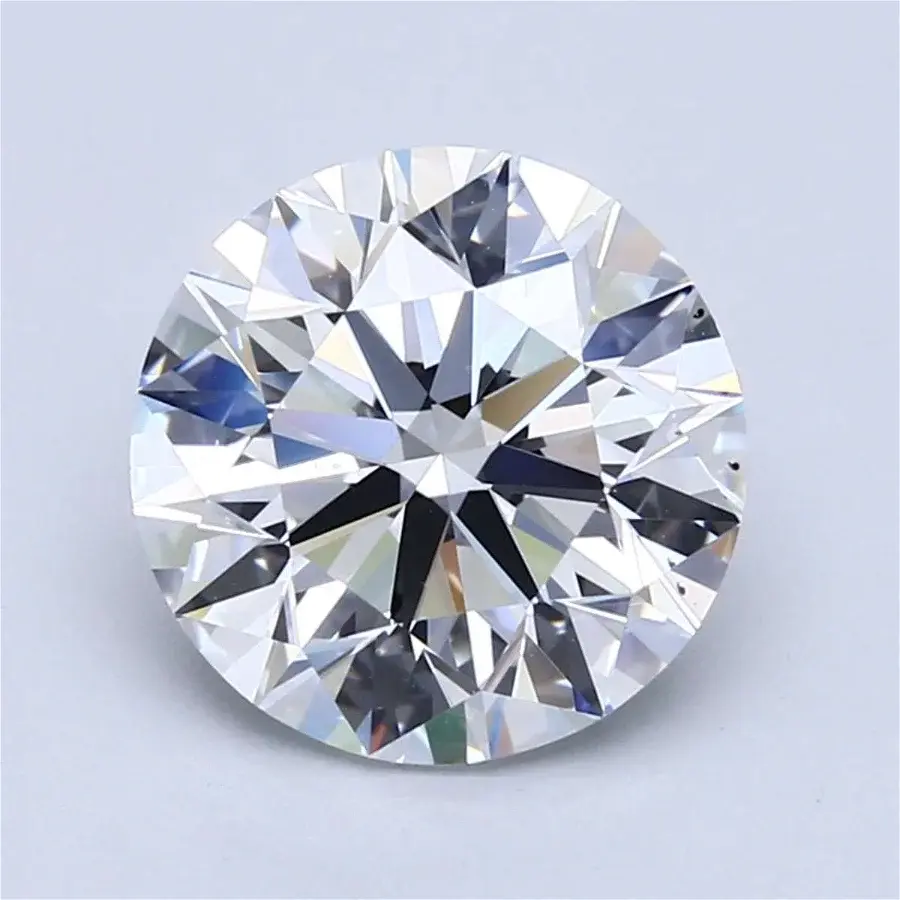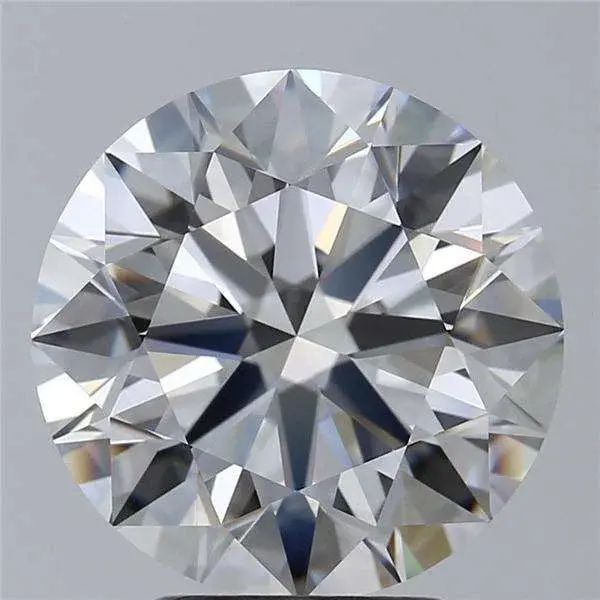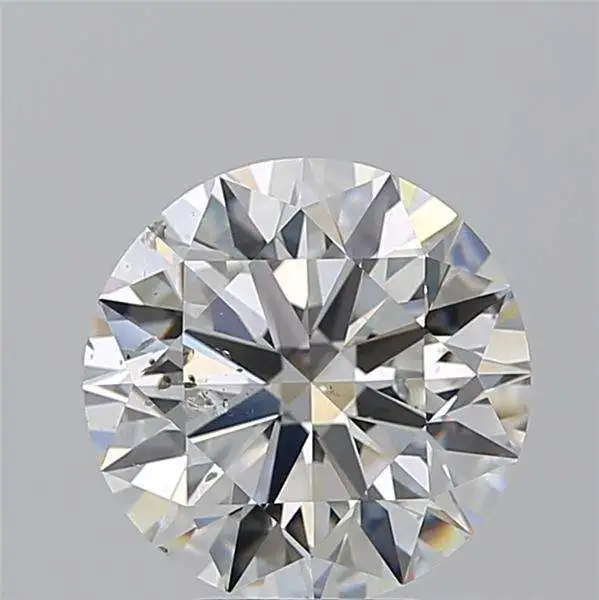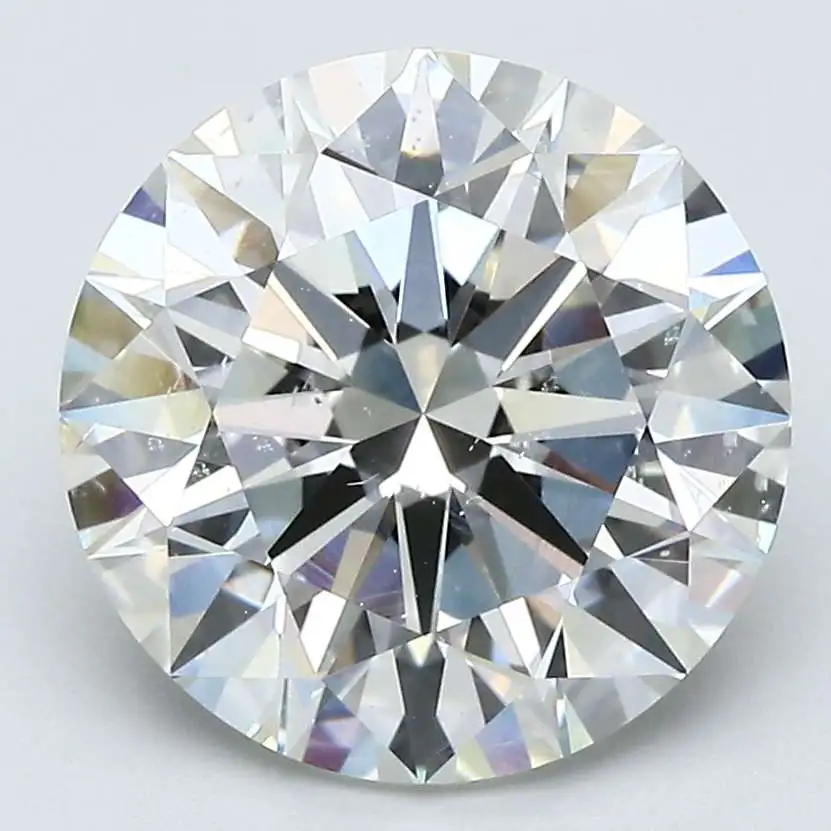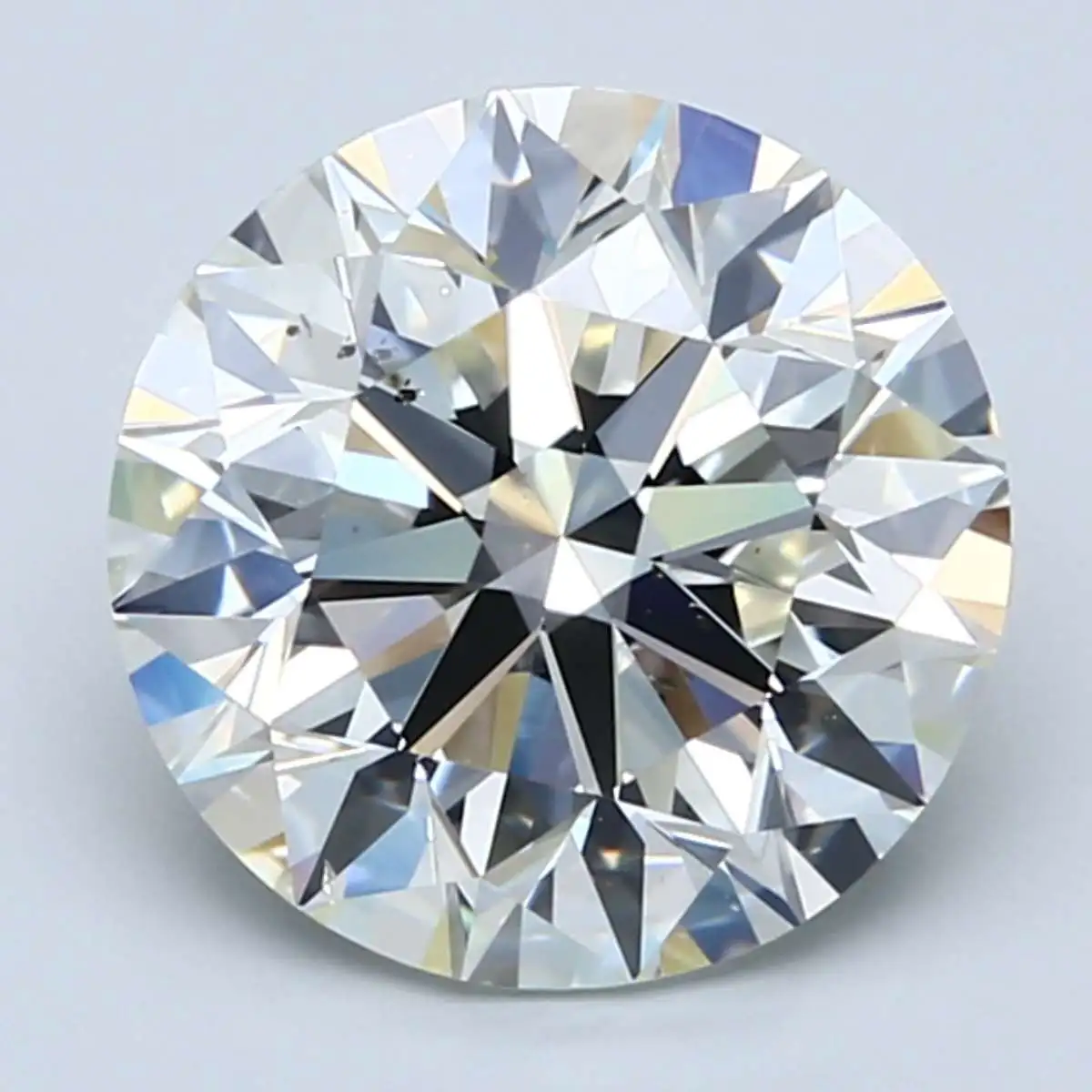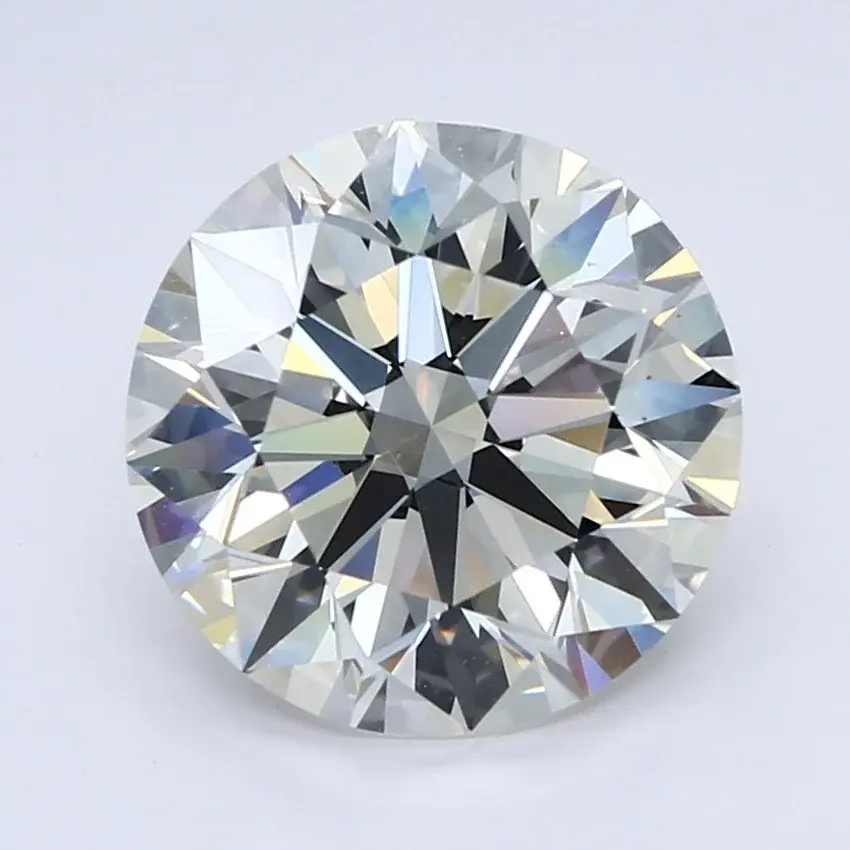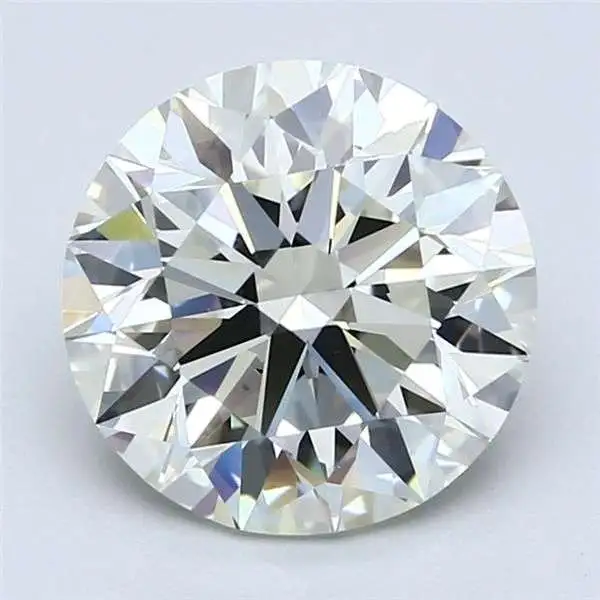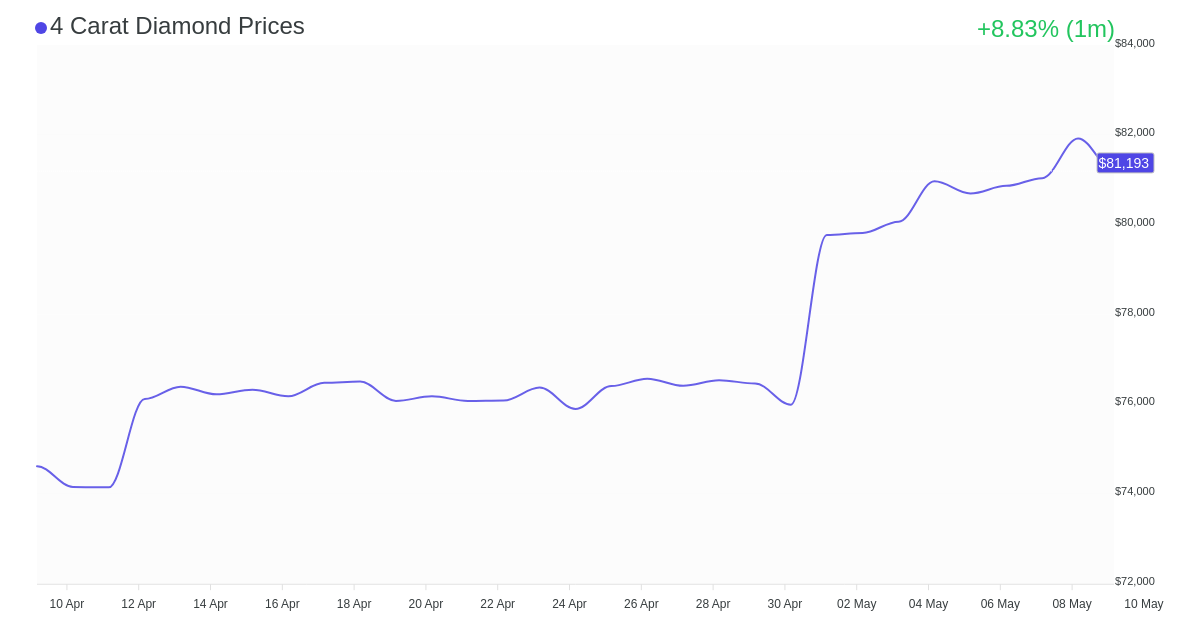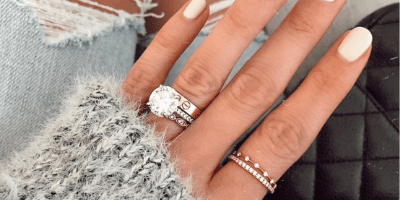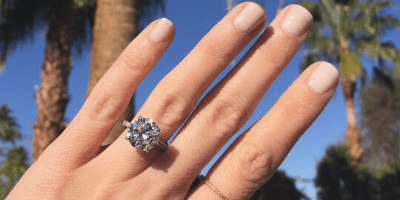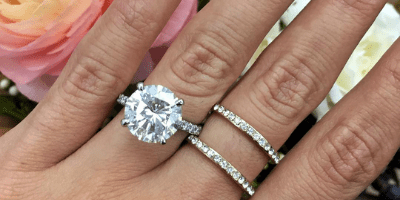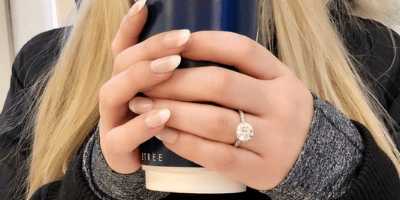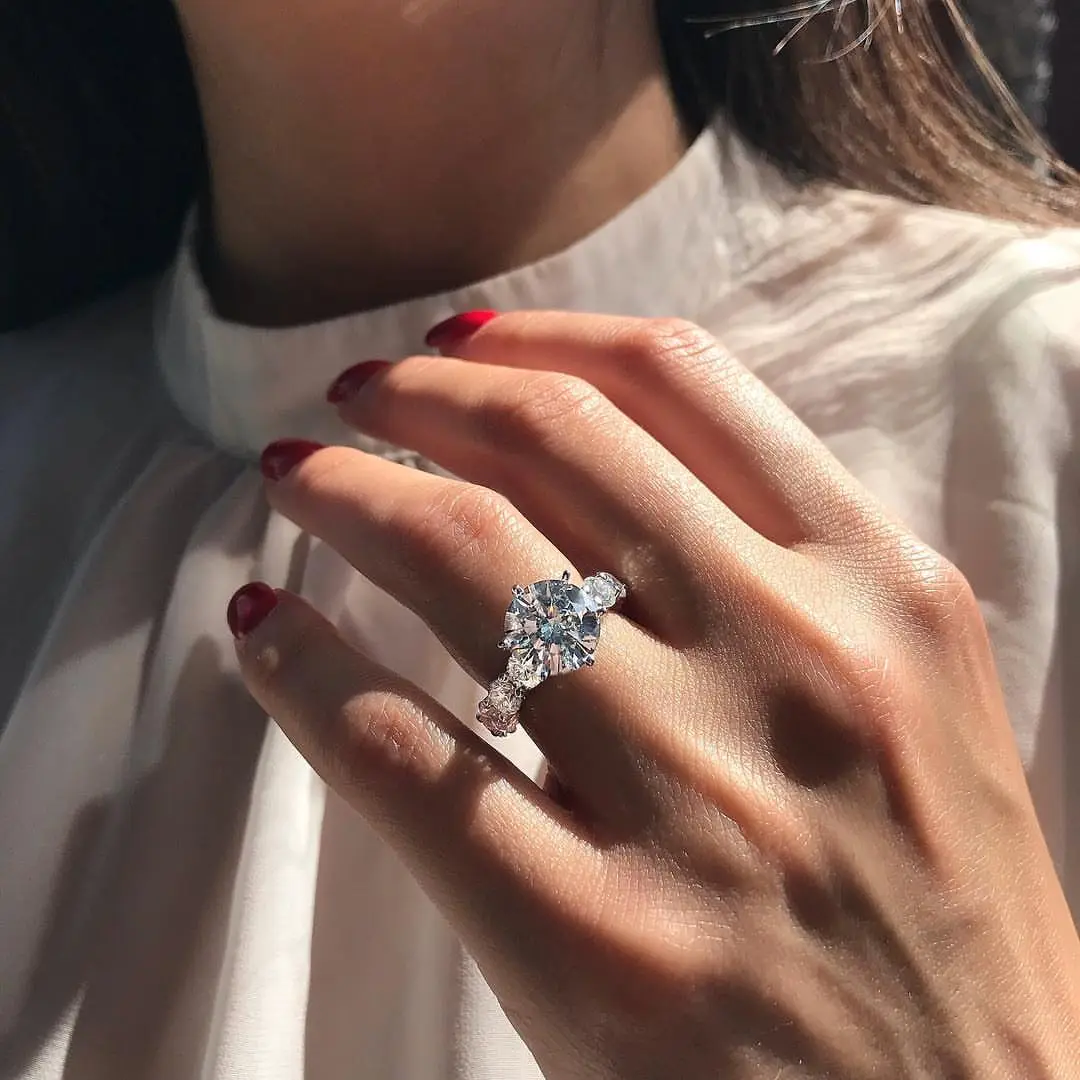January 24th 2022
4 Carat Diamond Rings: The Ultimate Guide
By Devin Jones
Buying a 4 carat diamond is no small feat – the cost alone raises the stakes for every aspect of the decision making process. For example, a relatively minor tweak like stepping down a color grade from G color to H color could save you over $10,000.
Different Color Grades For 4 Carat Round Diamond
Buying a 4 carat diamond is no small feat – the cost alone raises the stakes for every aspect of the decision making process. For example, a relatively minor tweak like stepping down a color grade from G color to H color could save you over $10,000. To illustrate the difference between each color grade we have picked one 4 carat diamond from every color grade D – K, making sure to keep all of the other GIA grading metrics the same. Click on the images for more details.
Click the diamonds above for more details
It’s tough to tell the difference between any of these diamonds when viewed faced up, because diamonds always look whitest when viewed from this angle (viewed as they would be in an engagement ring setting). This demonstrates that color actually matters very little after a certain threshold. However, there is a big difference in price; the D Color is going for $111,083 while the asking price for the K color’s is $41,264.
Before you decide to drop down to a K color diamond consider this: the larger the stone the more noticeable the subtle tinge of color becomes. Hence, most buyers err on the more conservative side by choosing a D - F color grade (known as “colorless”) for a 4 carat diamond.
We recommend you go no lower than an H color diamond and if you do pick one of the lower color grades like an I color diamond or J color diamond, that you choose a yellow or rose setting which will help offset some of the color. In fact, if you’re already planning to purchase a 4 carat engagement ring with a yellow gold setting you should certainly skew lower in color grade, otherwise you’re paying up for quality that will go totally underappreciated.
Color is just one of the many variables that influence the price of the diamond. If you are looking for a specific estimate you can use our Diamond Price Calculator or check out one of our diamond price chart pages.
🛡️ Check your diamond 💎 Shop 4 carat diamonds
4 Carat Round Price Chart
In the 4 carat diamond price charts below you can see that diamond prices fluctuate daily depending on supply and demand, and that lab grown diamonds (2nd chart) are significantly less expensive than natural diamonds (1st chart).
4 Carat Natural Diamond Prices
4 carat natural diamonds are exceptionally rare and expensive. The below chart shows the average price of 4 carat diamonds listed on StoneAlgo's diamond search engine by our network of top-rated online jewelers.
4 Carat Lab Grown Diamond Prices
Lab grown diamonds sell for a steep discount relative to natural diamonds and have been trending down consistently for years. While five years ago lab grown diamonds traded for roughly 50% of natural diamond prices, today lab grown diamonds are 90% less expensive than natural diamonds.
Here is our historical price chart showing 4 carat lab grown diamonds prices over the past 30 days:
4 carat natural diamond prices 4 carat lab diamond prices
4 Carat Diamond Rings On Hand
A 4 carat diamond is very large (the average size of an engagement ring in the US is 1.1 carats), so you are probably wondering what it would look like on her hand. Below we show 4 carat diamonds on a variety of finger sizes ranging from size 3 to size 7 ring size. You can design your own engagement ring in our AI powered ring builder and see how it looks in your specific size when rendered in stunning 3D.
Above is a 4 carat diamond on size 3 finger
Above is a 4 carat diamond on size 4 finger
Above is a 4 carat diamond on size 5 finger
Above is a 4 carat diamond on size 6 finger
Above is a 4 carat diamond on size 7 finger
4 Carat Diamonds In Different Setting Styles
A 4 carat diamond is an expensive purchase and you want to make sure that you use the setting that suits you or your loved one best. In this section we are going to go over a few of the most popular settings and show examples of each.
The most common setting styles are:
- The solitaire setting: in this setting the only diamond is the 4 Carat center stone and hence the sole focus
- The halo setting: in this setting the 4 Carat stone is surrounded by small diamonds all around it
- The three stone setting: in this setting two small (or big, its your call) stones are placed on either side of the 4 carat center stone
Let’s go over a few examples of what each looks like and what it means for the appearance of a 4 carat diamond.
4 Carat Solitaire Setting (Also Known As A Prong Setting)
The solitaire setting puts all of the emphasis on the center stone and you can still customize how many prongs you want it to have, giving it subtle personality. Given the size of the center stone and the lack of ‘distractions’, you want to make sure you got an amazing eye clean and sparkly diamond.
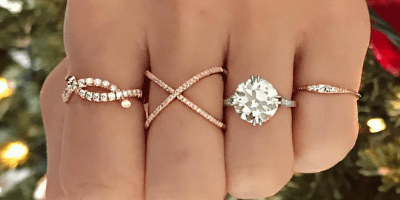
You can expect to pay around $450 for a 18k yellow gold setting like this one from Blue Nile.
4 Carat Halo Setting
Do you feel like 4 carats does not look quite big enough by itself? Then this is the setting for you. The diamonds around the center stone create a visual illusion that make it look even larger. This is a tradeoff though because it does take some focus away from the sheer size of your 4 carat center stone diamond.
When it comes for the surrounding stones, the clarity and cut do not matter nearly as much as they do for your center stone. You only want to make sure that you get a similar enough color grade to the center stone and if they differ that the smaller stones are a lower (worse) color grade (like G color grade side stones with an F color grade center stone).
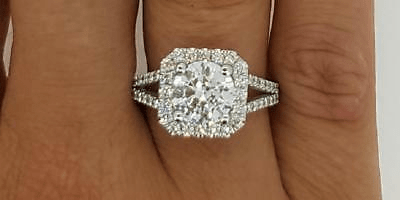
A halo engagement ring in 18k white gold starts at about $1,390.
4 Carat Three Stone Setting (3 Stone Setting)
The three stone setting allows you to play around with different shapes and achieve a similar result to that of the halo (to look larger). You can play around with the shapes of the side stones and often times it creates a unique and beautiful contrast to vary the center stone and side shapes like this 4 carat round cut diamond engagement ring with baguette sidestones.
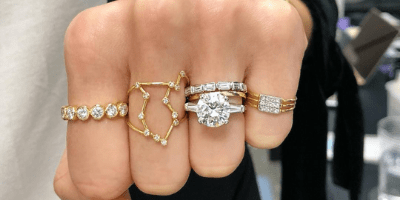
A three stone engagement ring in 18k white gold starts at about $3,220.
4 Carat Pave Engagement Rings
In addition to the setting you can also customize the band styles. The most common by far is the pave band, which consists of small diamonds on part (or the entire) ring.
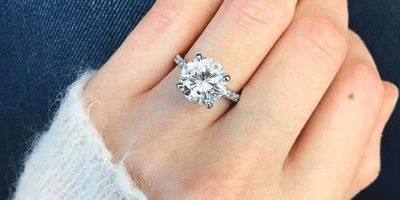
In this example we are looking at a halo settings with a pave band. A 1/4 carat total weight pave engagement ring in 18k white gold starts at about $1,450 (like this one from Blue Nile).
🛡️ Check your diamond 💎 Search 2M+ diamonds
4 Carat Diamond Size Chart
4 carat diamonds are huge by any standard, but you’d be surprised by how negligible the difference between larger carat weight diamonds like a 4 carat and 5 carat are when compared to smaller carat sizes. For example, the difference in diameter between a 1 carat and 2 carat diamond is 58.6% while the difference between a 4 and 5 carat diamond is just 16%.
The first reason behind this significant difference is that the carat weight itself is doubling from 1 to 2 carats but increasing by just 25% from 4 carat to 5 carat. The other reason is that the diamond is not only growing horizontally in two dimensions (making the diameter and surface area larger) but also vertically, meaning much of the diamond’s carat weight is distributed vertically and can’t be appreciated by viewing the diamond from above.
| Carat | Diameter (mm) | Surface Area (sq. mm) |
|---|---|---|
|
0.5 ct. |
5.10 |
20.41 |
|
1 ct. |
6.42 |
32.37 |
|
1.5 ct. |
7.35 |
42.39 |
|
2 ct. |
8.08 |
51.34 |
|
2.5 ct. |
8.71 |
59.55 |
|
3 ct. |
9.25 |
67.24 |
|
3.5 ct. |
9.74 |
74.50 |
|
4 ct. |
10.18 |
81.43 |
|
4.5 ct. |
10.59 |
88.06 |
|
5 ct. |
10.97 |
94.46 |
© 2024 StoneAlgo, Inc. All rights reserved.

